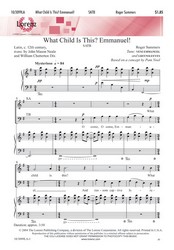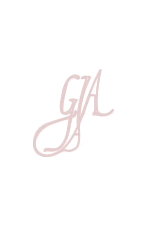- |
User Links
What Child Is This

What child is this, who, laid to rest
Author: W. Chatterton DixTune: GREENSLEEVES
Published in 210 hymnals
Printable scores: PDF, MusicXMLPlayable presentation: Lyrics only, lyrics + musicAudio files: MIDI, Recording
Representative Text
1 What Child is this, who, laid to rest,
On Mary's lap is sleeping?
Whom angels greet with anthems sweet,
While shepherds watch are keeping?
Chorus:
This, this is Christ, the King,
Whom shepherds guard and angels sing:
Haste, haste to bring Him laud,
The Babe, the Son of Mary!
2 Why lies He in such mean estate,
Where ox and ass are feeding?
Good Christian, fear: for sinners here
The silent Word is pleading.[Chorus]
3 So bring Him incense, gold, and myrrh,
Come, peasant, king to own Him.
The King of kings salvation brings;
Let loving hearts enthrone Him.[Chorus]
Baptist Hymnal, (2008)
Author: W. Chatterton Dix
 Most British hymn writers in the nineteenth century were clergymen, but William C. Dix (b. Bristol, England, 1837; d. Cheddar, Somerset, England, 1898) was a notable exception. Trained in the business world, he became the manager of a marine insurance company in Glasgow, Scotland. Dix published various volumes of his hymns, such as Hymns of Love and Joy (1861) and Altar Songs: Verses on the Holy Eucharist (1867). A number of his texts were first published in Hymns Ancient and Modern (1861).
Bert Polman… Go to person page >
Most British hymn writers in the nineteenth century were clergymen, but William C. Dix (b. Bristol, England, 1837; d. Cheddar, Somerset, England, 1898) was a notable exception. Trained in the business world, he became the manager of a marine insurance company in Glasgow, Scotland. Dix published various volumes of his hymns, such as Hymns of Love and Joy (1861) and Altar Songs: Verses on the Holy Eucharist (1867). A number of his texts were first published in Hymns Ancient and Modern (1861).
Bert Polman… Go to person page >Text Information
Related Texts
| First Line: | What child is this, who, laid to rest |
| Title: | What Child Is This |
| Author: | W. Chatterton Dix |
| Meter: | 8.7.8.7 with refrain |
| Language: | English |
| Refrain First Line: | This, this is Christ the King |
| Notes: | Spanish translation: See "Qué niño es éste que al dormir" by Angel M. Mergal; Polish translation: See "Cóż to za Dziecię slodko śpi na sianie, w twardym żlobie"> by Adela Bajko |
| Copyright: | Public Domain |
- Year A, Advent, Fourth Sunday
This is recommended for Year A, Advent, Fourth Sunday by 2 hymnal lectionary indexes including Glory to God: the Presbyterian Hymnal #145. - Year A, Christmas season, Christmas Eve
This is recommended for Year A, Christmas season, Christmas Eve by 2 hymnal lectionary indexes including Glory to God: the Presbyterian Hymnal #145. - Year A, Christmas season, Christmas Day
- Year A, Christmas season, First Sunday after Christmas Day
This is recommended for Year A, Christmas season, First Sunday after Christmas Day by 2 hymnal lectionary indexes. - Year A, Epiphany season, Epiphany of the Lord
This is recommended for Year A, Epiphany season, Epiphany of the Lord by 4 hymnal lectionary indexes including Glory to God: the Presbyterian Hymnal #145 and Lift Up Your Hearts: psalms, hymns, and spiritual songs #95. - Year B, Advent, Third Sunday
- Year B, Christmas season, Christmas Eve
This is recommended for Year B, Christmas season, Christmas Eve by 2 hymnal lectionary indexes including Glory to God: the Presbyterian Hymnal #145. - Year B, Christmas season, Christmas Day
This is recommended for Year B, Christmas season, Christmas Day by 2 hymnal lectionary indexes including Glory to God: the Presbyterian Hymnal #145. - Year B, Christmas season, Christmas Day
- Year B, Christmas season, First Sunday after Christmas Day
This is recommended for Year B, Christmas season, First Sunday after Christmas Day by 2 hymnal lectionary indexes including Lift Up Your Hearts: psalms, hymns, and spiritual songs #95. - Year B, Epiphany season, Epiphany of the Lord
This is recommended for Year B, Epiphany season, Epiphany of the Lord by 3 hymnal lectionary indexes including Glory to God: the Presbyterian Hymnal #145 and Lift Up Your Hearts: psalms, hymns, and spiritual songs #95. - Year B, Epiphany season, Epiphany of the Lord
- Year C, Christmas season, Christmas Day
This is recommended for Year C, Christmas season, Christmas Day by 2 hymnal lectionary indexes including Glory to God: the Presbyterian Hymnal #145. - Year C, Christmas season, Christmas Day
- Year C, Christmas season, First Sunday after Christmas Day
- Year C, Epiphany season, Epiphany of the Lord
This is recommended for Year C, Epiphany season, Epiphany of the Lord by 4 hymnal lectionary indexes including Glory to God: the Presbyterian Hymnal #145 and Lift Up Your Hearts: psalms, hymns, and spiritual songs #95.
English
- A Hymnal and Service Book for Sunday Schools, Day Schools, Guilds, Brotherhoods, etc. #538
- A New Hymnal for Colleges and Schools #232
- A Treasury of Hymns: The best-loved hymns, carols, anthems, children's hymns, and gospel songs #89
- African American Heritage Hymnal #220
- Alleluia! Let Us Sing! #d12
- Ambassador Hymnal: for Lutheran worship #26
- American Junior Church School Hymnal #77
- Ancient and Modern: hymns and songs for refreshing worship #88
- Angelic Songs #d232
- Baptist Hymnal 1991 #118 10 shown out of 160
Korean
Spanish
For Leaders
Have you ever studied the words of Isaiah 9:6-7 (they begin, "For to us a child is born") and realized just how strange they are? At first glance, the grand titles and expectations seem absurd to place on a child. It’s a strange picture - a small child, hunched over like Atlas, a parliament building set on his shoulders, wearing a crown, perched on a throne, with a very troubled look on his face, as if to say, “What in the world am I doing here?” And yet, this is exactly what these verses tell us to be true. Of course, there was no actual building, no real throne, and no crown but one of thorns. But the thought is still astounding – this child, this baby wrapped in swaddling clothes, would be the fulfillment of these promises. He would be, and is, the Wonderful Counselor, Mighty God, Everlasting Father, Prince of Peace. It is this astonishing prophecy that we keep in mind when we ask the question, “What child is this?”
Text:
This text, by William C. Dix, is his own modification of a poem he had written entitled “The Manger Throne.” There are two differences in the text between hymnals. Some hymnals, rather than divide into three verses and a chorus, make the tune of the chorus an extension of each verse, using the traditional words for the chorus as an extension of verse one, and adding new words to verses two and three. Other hymnals that keep the traditional structure alter the third line of the chorus to repeat, “This, this is Christ the King,” rather than “Haste, haste to bring Him laud.”
Tune:
Perhaps the most famous aspect of this hymn is its tune. GREENSLEEVES is an iconic medieval tune, named for the character about which the old folk song was written, Lady Green Sleeves. It is the only tune now used for Dix’s text. One important difference in the tune among various versions is found in the second measure. The rising notes on the word “this” can either be sung as a half step from B to C, or a whole step, from C to C#.
This gentle hymn can be sung a cappella, or with very light accompaniment. The harmonies are beautiful, so be sure to draw those out. You could start with a children’s choir on the first verse, and add the congregation on the last two. Or start a cappella, and add light guitar or piano. Don’t be afraid to sing this hymn at a fairly quick tempo.
When/Why/How:
This is a well-known Christmas carol, and is often sung during a carol sing or Christmas Eve service. It is often sung as a solo, and could be sung during the offering, emphasizing the words, “so bring Him incense, gold and myrrh.” Larry Shackley has a beautiful arrangement of this hymn combining it with “Coventry Carol” in his collection of carols for the piano, Christmas Reflections. On the flip side, this hymn could also be sung during the season of Lent. There is an article in Reformed Worship called “Students Celebrate Holy Week: Resources from Two High School Chapels” with an excellent dramatic reading interspersed with the singing of this hymn for a Good Friday service.
Suggested Music:
- Haugen, Marty. What Child Is This - for SAB Choir
- Donnely, Mary. Who Is this Child? (Incorporating "What Child Is This?) - flexible Choir anthem, optional guitar and flute parts
- Hopson, Hal H. What Child Is This? - for Choir
- Proulx, Richard. Six A Cappella Christmas Carols - for Choir
- The Great Christmas Concert (8 Favorite Carol Duets for Organ and Piano
- Held, Wilbur. Christmas Comes Again, Set 2 - for Organ
Laura de Jong, Hymnary.org
Timeline
Arrangements
Media
Baptist Hymnal 2008 #198
Hymns: for home and church #1203
- What Child Is This? (PDF)
The United Methodist Hymnal #219
- MIDI file from Baptist Hymnal 1991 #118
- MIDI file from Baptist Hymnal 1991 #118
- Audio recording from Baptist Hymnal 2008 #198
- MIDI file from Baptist Hymnal 2008 #198
- Audio recording from Celebrating Grace Hymnal #148
- MIDI file from Carols Old and Carols New: for use at Christmas and other seasons of the Christian year #108
- MIDI file from The Cyber Hymnal #7273
- Audio recording from Evangelical Lutheran Worship #296
- Audio recording from Glory to God: the Presbyterian Hymnal #145
- MIDI file from Hymns and Carols #9
- Audio recording from Lift Up Your Hearts: psalms, hymns, and spiritual songs #95
- Audio recording from Lift Up Your Hearts: psalms, hymns, and spiritual songs #95
- Audio recording from Lift Up Your Hearts: psalms, hymns, and spiritual songs #95
- Audio recording from Trinity Hymnal (Rev. ed.) #213
- Audio recording from The Worshiping Church #150
- MIDI file from The United Methodist Hymnal #219
- Audio recording from The United Methodist Hymnal #219
- MIDI file from Worship and Rejoice #184
- Audio recording from Worship (4th ed.) #454


 My Starred Hymns
My Starred Hymns







